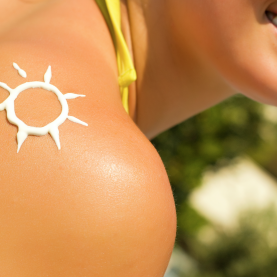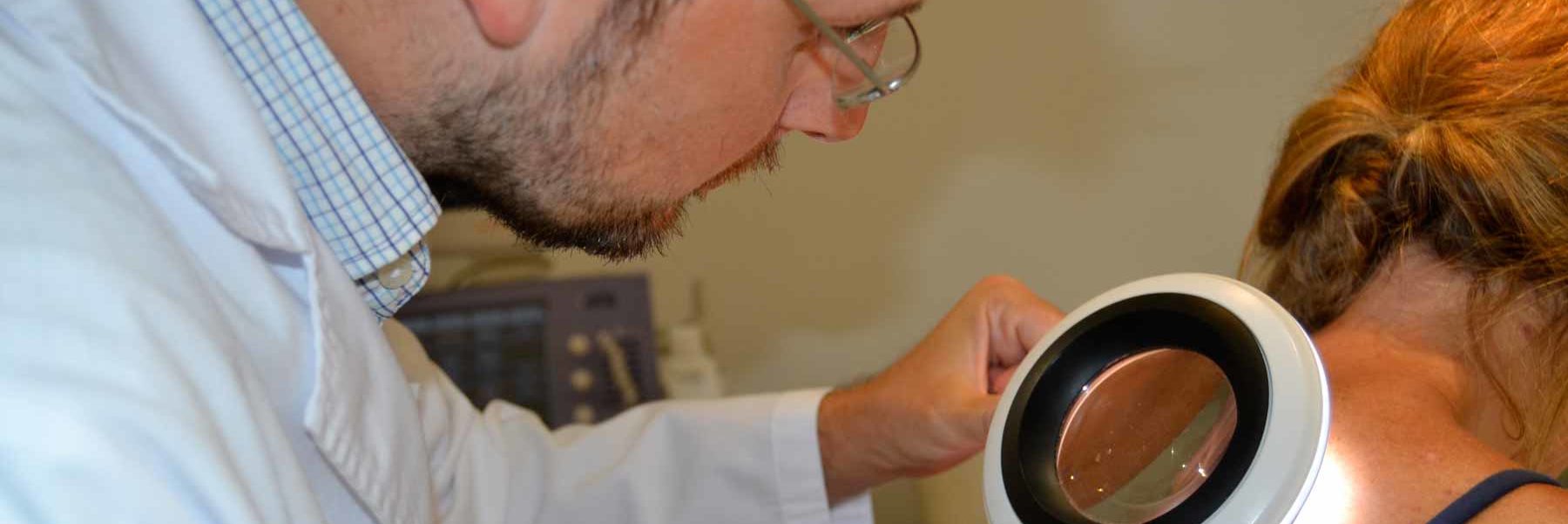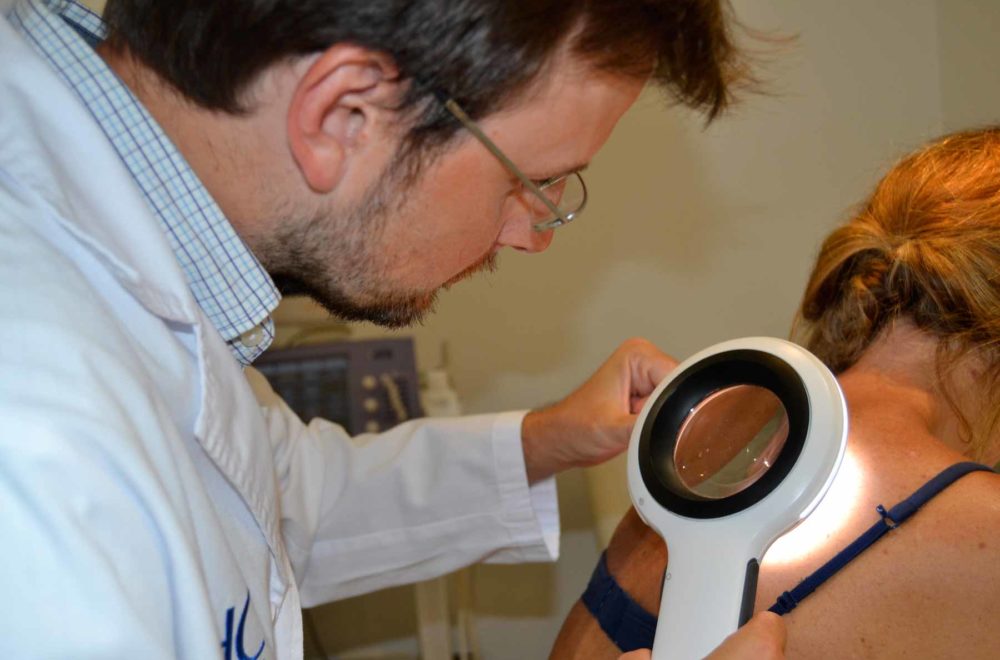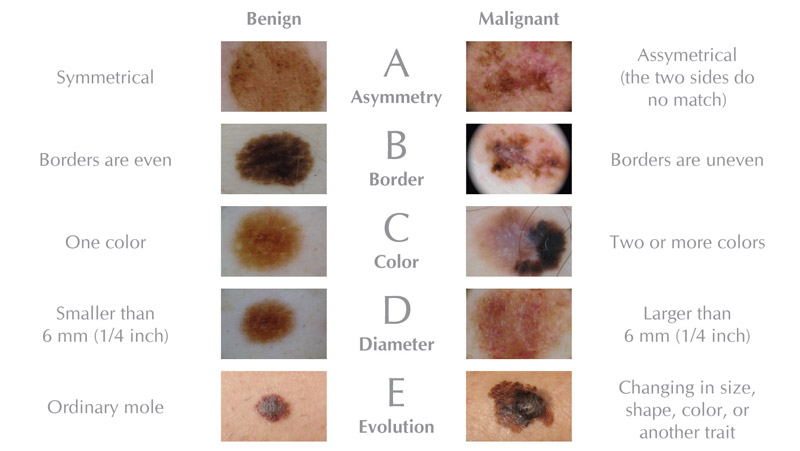



The incidence of skin cancer has increased significantly. We can divide skin cancer into two groups:
At present, non-melanoma skin cancer is the most frequent cancer in the white race. The most frequent forms of non-melanoma skin cancer are: basal cell carcinoma (80% of the cases), and squamous cell carcinoma (20% of the cases). The main treatment for these tumours is a surgical operation and it will have a therapeutic aim but also a cosmetic aim. Early diagnosis improves the chances enormously of reaching these two aims.
Melanoma is the most frequent cause of mortality from skin cancer as it makes up 80% of the deaths from skin cancer. Early detection of the melanoma and a good prognosis, along with the correct treatment in the initial stages, are essential to cure the melanoma. Chances of survival can be 100% if these objectives are achieved in time.
Both types of cancer are related to sun exposure. It is important to limit direct exposure to sunlight to one or two hours a day and not continuously but at intervals of 15-20 minutes and never during the hottest part of the day (midday). Always use a protective sun cream and take extra precautions with children and the elderly.
1.- Ultraviolet radiation: Increased incidence of skin cancer is related to exposure to the sun, especially with sunburn in infancy and adolescence. Harmful sunburn at such an early age initiates the carcinogenesis which will cause the development of skin cancer years later.
2.- Immunosuppression: Immunosuppression caused either by medication, HIV infection or systemic disease is associated with a rise in skin cancer.
3.- Scars: The development of skin cancer in scarred tissue has been well noted.
4.- Precancerous lesions such as keratosis actinica (like yellowish lesions covered with fine scales).
5.- Persons with a high number of unusual moles or nevi.
6.- Presence of nevi or unusual moles in patients with a family history of melanoma.
7.- A previous history of melanoma: a patient suffering a melanoma is at greater risk of developing a second melanoma.
8.- A family history of melanoma.
9.- Light skins, that do not tan but burn easily.
10. Moles that change their colour, shape or size, or a mole that has recently appeared or grown rapidly in an adult.
11. Scabs that do not disappear for months and bleed when rubbed.
“Lumps”, “spots” or “moles” of new appearance, or others of long evolution, that grow or change shape or size.
“Wounds” that do not finish healing.
“Spots” different from the rest.
With regard to melanoma (“skin cancer related to moles”), an easy and very useful rule would be the rule of “ABCDE” (we must consult before a mole Asymmetric, with irregular edges, several colors, larger diameter of the rubber of a pen (about 6mm) as well as if there is Evolution (change in time) It is also useful the so called “sign of the ugly duckling” (which refers to a special care when a mole is very different from the rest).
Hence the importance of checking the skin, and, in case of doubt, the dermatologist must always be the specialist to ask about. Thanks to the use of techniques such as dermatoscopy, or biopsy if necessary, an opportune diagnosis will be obtained.

In most cases of skin cancer, an early diagnosis will facilitate a better prognosis and a greater probability of obtaining a completely curative treatment.
Home » Specialties of HC Marbella » Dermatología » Haut-Krebs-Vorbeugung
Dr. Frieyro Elícegui, Marta
Specialist in Dermatology and Venereology
Dr. Del Boz, Javier
Specialist in Dermatology and Venereology
Dr. Segura Palacios, Juan Manuel
Specialist in Dermatology and Venereology
Tel.: +34 952 908 628
+34 609 148 799
952908898 Oncology
951829978 Diagnosis by imaging
951829947 Gynecology
952908897 Fertility
951829947 Physiotherapy



